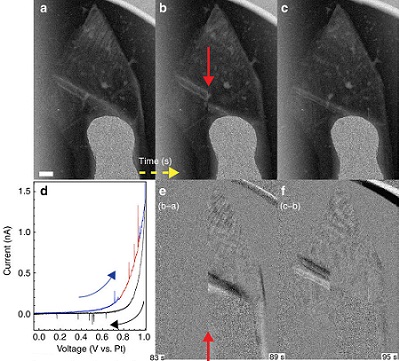Researchers from University of California, Los Angeles have used Hummingbird’s TEM biasing holder to study the electrochemical events during the intercalation and deintercalation of single-microcrystal graphite in concentrated sulfuric acid. The results have been published in Nature communications.

Copyright ©2017 Macmillan Publishers Limited, part of Springer Nature
Graphite is a state-of-the-art material used as a negative electrode in lithium-ion battery applications. Graphite is a highly studied material, and yet, the dynamics of transitions between intercalated and deintercalated stages are not well understood. Here, the researchers used custom microfabricated liquid chips to sandwich the graphite device in sulfuric acid, and electrically contacted using the Hummingbird TEM biasing holder. With real-time STEM imaging, the dynamics of single-microcrystal graphite during intercalation and deintercalation were recorded. They observed that the defects dominated the movement of phase transitions demonstrating asymmetric current pulses associated with abrupt structural changes. These intercalation and deintercalation events are in stark contrast with the traditional models which rely upon the measurements taken through bulk averaging techniques.
Reference: Edward R. White, Jared J. Lodico & B. C. Regan. “Intercalation events visualized in single microcrystals of graphite,” Nature Communications (2017). DOI:10.1038/s41467-017-01787-8
View All News

